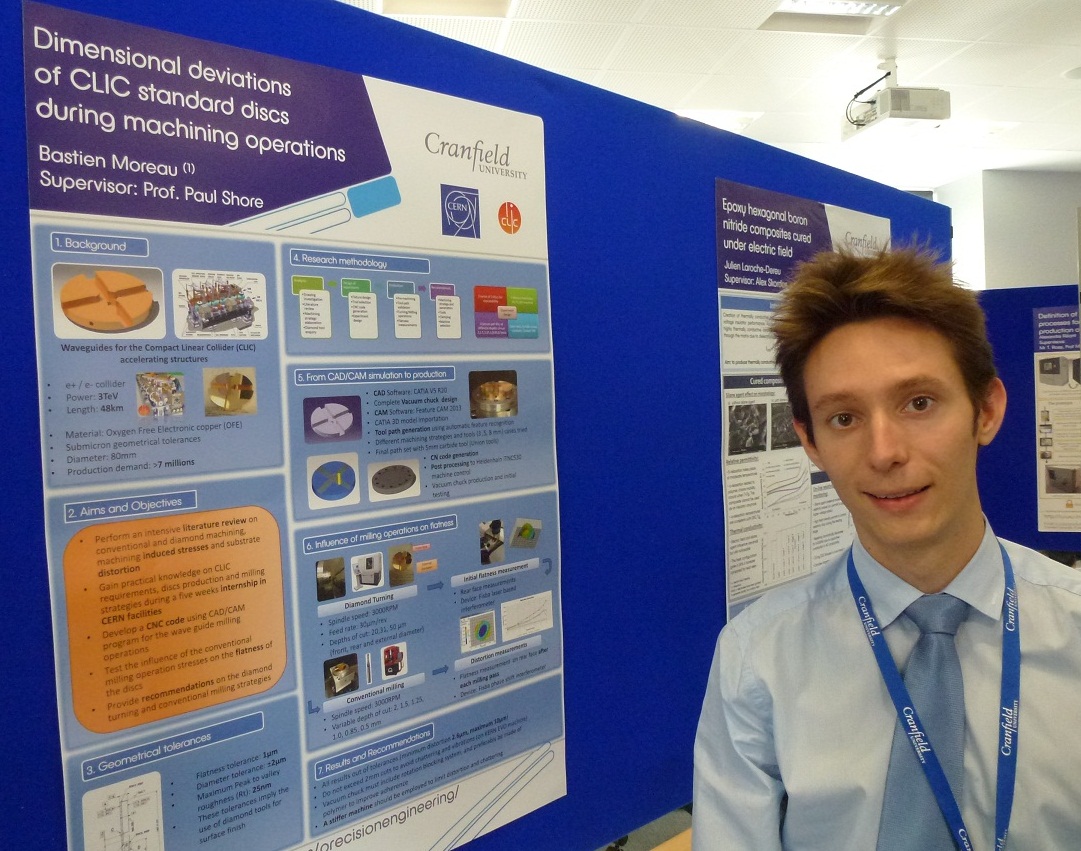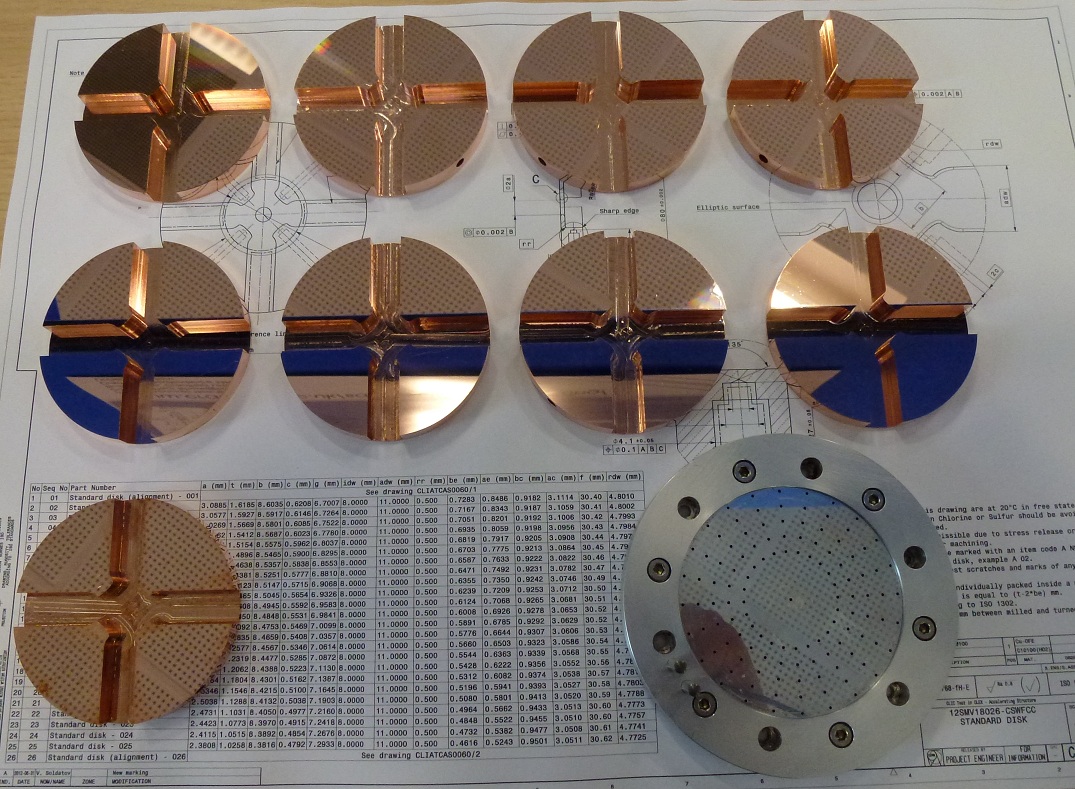Project Researcher: Bastein Moreau
The European Council for Nuclear Research, better known as CERN is in constant evolution, and develops novel accelerators with brand new technologies, like the Compact Linear Collider (CLIC). With an expected length of 48km, this new accelerator is supposed to reach the energy levels of 3TeV for colliding electrons and positrons.
To produce this accelerator, more than 7 million standard copper discs are required. To guarantee perfect bonding, the CLIC engineers have imposed a set of sub-micron tolerances (flatness, shape accuracy), combined with a severe roughness tolerance (Rt <25nm). To fulfill these requirements, high precision engineering is needed to develop an accurate and cost effective manufacturing process. Diamond machining is one of the key technologies to fulfill these requirements.
The project provided a complete study on dimensional deviations when milling the waveguide. A literature review combined with experimental work on a Kern micro milling machine was undertaken. CAD simulations were carried out to generate the complex tool path required for the cross milling operations. Distortion on the back surface of the disc was measured using phase shift interferometers at different depths of cut and feed rates during the rough milling process using carbide tools.
This project was undertaken as part of an MSc individual research project during academic year 2012-2013, sponsored by CERN and supervised by Prof Paul Shore.



